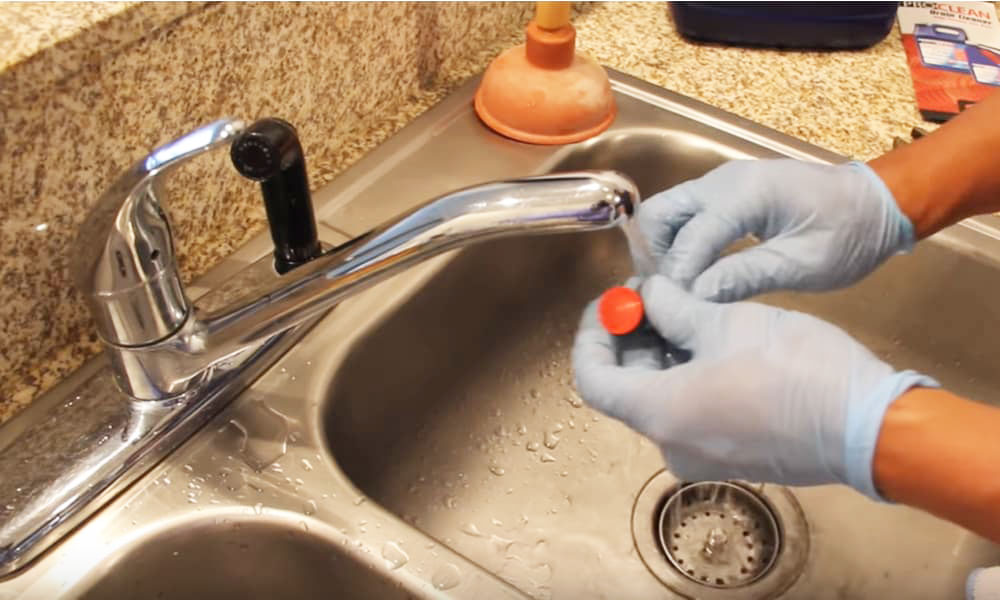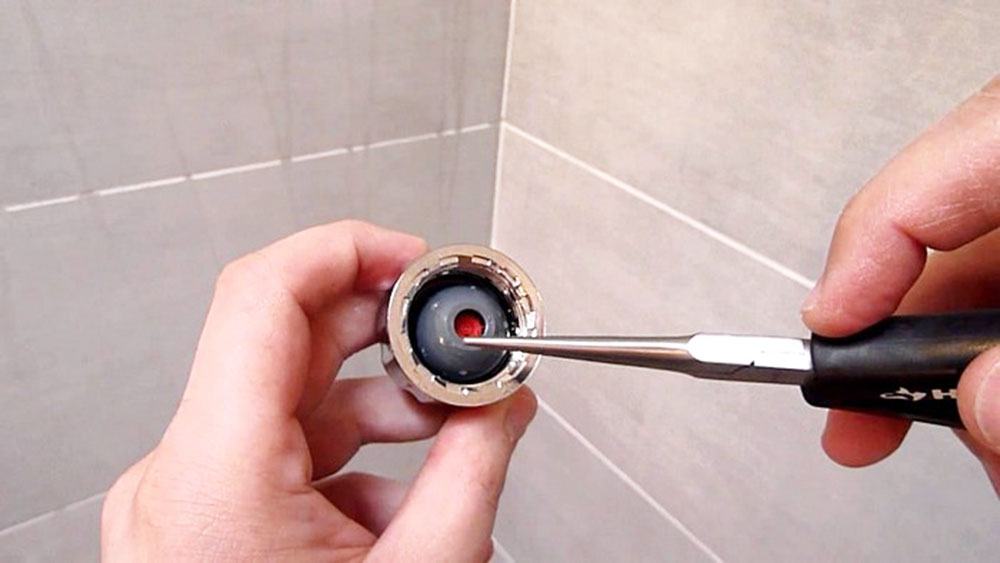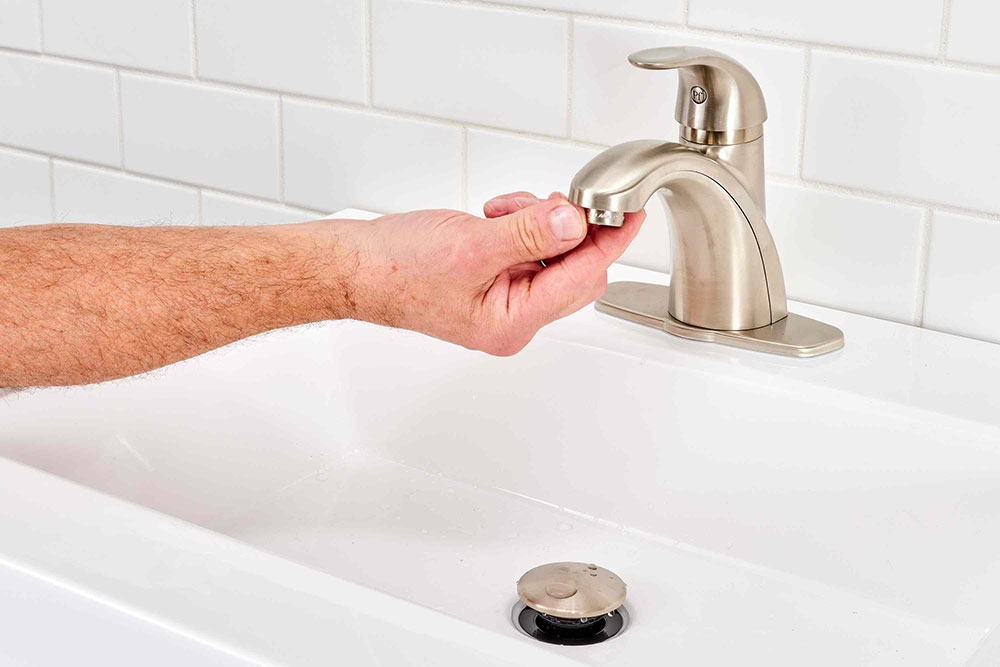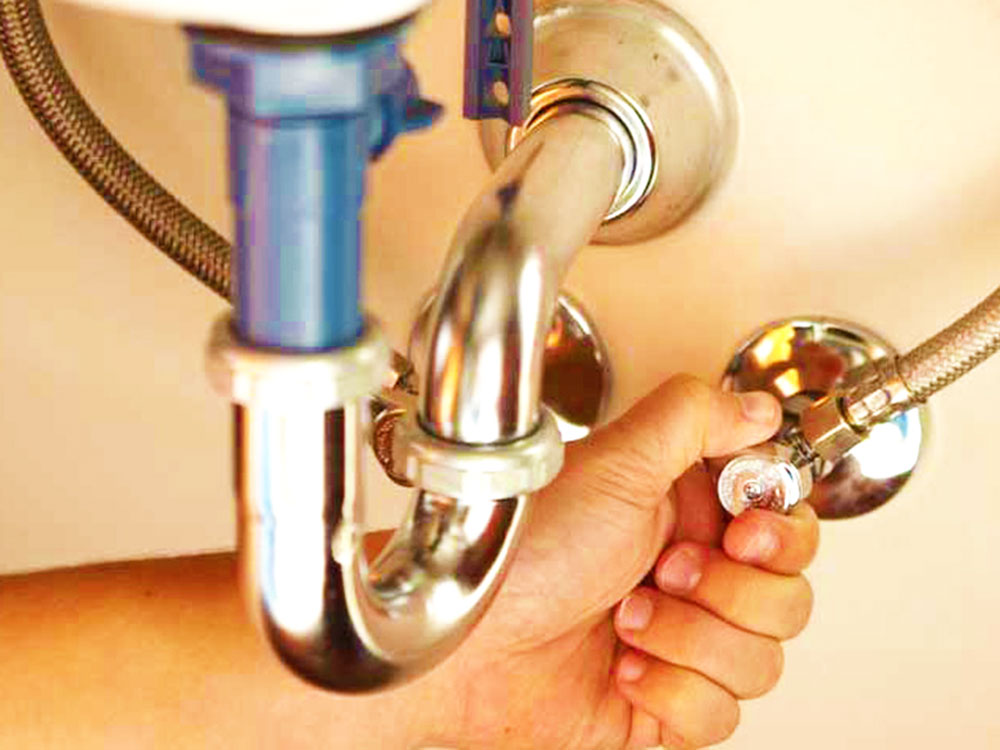Advertisement
When you have low water pressure in the kitchen sink, it can be really aggravating. We understand how you’re feeling. It is possible that washing the dishes may become a nightmare due to insufficient water pressure since this will increase the amount of time and effort required to complete the task successfully. So, you probably asked yourself: how to increase water pressure in the kitchen sink?
A number of factors have come together to put us in this difficult situation. Items like things you can inspect and fix on your own as well as understanding when it’s time to call a professional plumber are among the topics we’ll cover.
Reduced water pressure at the kitchen faucet, showers, and other water outputs is one of the most common water concerns that homeowners encounter, and it affects nearly all of them.
Is The Problem Localized Or General?
If your problem is how to increase water pressure in the kitchen sink, here’s the first thing you should consider.
Whenever the water pressure in your kitchen faucet begins to decline, the first thing you should do is determine whether the water pressure in the other faucets in your home is excessive or insufficient. A problem with the home’s water pipeline might be causing low water pressure in all of the faucets throughout.
Especially if you have recently modified your house and installed water outlets, the increased demand may have caused the pressure to drop. As a result, it is possible that you may need to extend your main water line.
There are pressure-reducing valves installed in many houses to lessen the pressure of municipal water entering the household. Find the one that fits your needs and preferences. When the water enters the home via the waterline, it produces a bell-shaped look and is usually observed on the water line.
Adjust the setting
The water pressure might be reduced as a result of leaks in the water pipes. Turn off your main water valves to see if there is a leak anyplace in the system. Take a measurement using the water meter. You can also easily detect any water leakage if you install the Bluebot smart water meter which allows you to monitor through your phone every water line in your home.
Return in a couple of hours and recheck the meter. If the reading has risen, you have a leak in your plumbing.
Fixing the Water Pressure Problem When Only the Kitchen Faucet Is Affected
If you’ve confirmed that the water pressure issue is limited to your kitchen faucet, the solution to how to increase water pressure in the kitchen sink is close at hand.
Clogged Aerators
If you look carefully at the kitchen faucet, you will see that it has a cap that looks like a wire. It’s referred to as an aerator in this context. Whether you are experiencing low water pressure, you should check to see if the aerator is functioning correctly. Minerals and other debris may get stuck in the faucet over time, resulting in a significant reduction in the water pressure.
Simple slip-joint pliers, or any other instrument, may be used to remove the aerator. Before you begin, make sure that the sink is completely covered. Why? It is possible that the plier or other tools may slip from your hands, inflicting injury or at the very least a mark on the sink surface.
After you’ve taken it out, clean up the mess with a toothbrush or a safety pin. Additionally, you may soak it in vinegar for a few hours to remove odors. The aerator will be properly cleaned as a result of this. You’ll notice that the water pressure has restored to normal, if not better, once you’ve replaced the valve.
Clean the Filter in a Pull-Out Faucet
Remove the faucet handle by twisting it using channel lock pliers. If your sink has a faucet with a detachable hose, remove it in order to have access to the underside of the faucet handle. You may use channel lock pliers to hold it and rotate it counterclockwise, which will release the nut at the bottom of your handle. When the handle is loose, it should be easy to pry it out of the way.
Remove the filter and give it a good rinse. The filter, which is shaped like a cylinder with many layers of metal mesh, is located at the base of the handle’s base. Remove the filter from the handle with your hand. Use warm water to flush out any dirt or buildup that has accumulated within the filter. If silt becomes entangled in the mesh, it may be removed using a stiff-bristled toothbrush.
Run the faucet for 10 seconds to flush out any debris that has accumulated. Before reattaching the handle to your faucet, run a stream of warm water through it. This may aid in the removal of any loose sediment from the faucet, preventing the particles from clogging your filter.
Replace the filter and reattach the handle to the supply pipe with a screwdriver. Reposition the filter inside the handle’s base so that it faces the same direction as it did previously. Keep the handle as near to the hose’s end as possible so that you can easily screw it together again. Tighten the nut as much as you can by hand before applying pressure with your channel lock pliers to seal it in place.
Check the Shut-Off Valves
The shut-off valve may be adjusted to increase or decrease the amount of water that flows through the kitchen faucet. In order to prevent the water supply to the sink from being interrupted, this valve must be turned off. If you look under your sink, you may be able to find this valve.
Because of the accumulation, even when the valve is completely opened, the water pressure may not rise as a result.
The issue with the shut-off valve can be solved in a few steps. To begin, turn on the water valve with a wrench to check the pressure. No need to test the other choices if there is a significant difference between before and after pressure.
Unless there is a change in pressure as a consequence of rotation, the shut-off valve is to blame for the low water pressure in the kitchen faucet, and the shut-off valve should be changed. Turn off the water supply before you begin altering the valve. By using a wrench and other tools, you may open the valve and then replace it with a new one. Check the water pressure after restarting the supply.
Clogged Kitchen Faucet Cartridges
It is located deeper in your faucet than your aerator and contains a hole through which water may be drawn from the faucet. Because of hard water accumulation, these cartridges get clogged or blocked, resulting in low water pressure from kitchen faucets. Most of the time, all they need is a thorough cleaning. This is another rather straightforward do-it-yourself repair project to do.
Shut off the water supply to your sink and repeatedly turn on and off the faucet until no more water is flowing out.
After that, remove the valve handle. Remove the screw cap from the faucet, as well as the screw that holds the faucet in place. It is possible that the use of an Allen wrench will be required throughout this operation.
Remove the shut-off valve’s handle from the valve.
After that, remove the cartridge from the machine. Depending on your model, you may need to remove a few of more screws as well. Make a point of arranging them in preparation for reassembly.
- When the cartridge has been extracted, remove it from the machine. Despite the fact that washing with water and vinegar is a possibility, we advocate acquiring a brand new one. Simply take the old one to a hardware store and have it matched up to the new one.
When Only the Hot Water Pressure Is Low
This might indicate that your water heater is malfunctioning if you have a sink in your home where the hot water pressure is low, but the cold water pressure is acceptable. If you have a problem with your hot water heater that results in low water pressure when the hot water is switched on, it is probable that the issue will impact more than one faucet in your home. When the hot water is turned on, it impacts all of the faucets in the house at once.
Water heaters, like faucet aerators, acquire sediment over time if they are not cleaned on a regular basis, and this may cause problems. Tank and tankless water heaters should be cleaned once a year, or more regularly if the water is exceptionally hard, according to the manufacturer.
In the water, deposits of calcium and other kinds of sediment build up over time, and if they aren’t removed, they may impede the water heater’s capacity to heat the water, increase energy usage, and reduce hot water pressure throughout the home.
If you’re running out of hot water more quickly than normal and experiencing low hot water pressure, it’s time to get your water heater cleaned.
Flush the Supply Lines
Turn the hot water valve off if necessary. Locate the hot water control valve, which is usually located under your sink. The valve should be rotated counterclockwise until it is horizontal with respect to the pipe to which it is attached. The hot water supply to your faucet will be turned off as a result of this action.
Disconnect the supply line from the hot water valve and put it in a bucket to catch any water that may spill. Using channel lock pliers or your fingers, turn the nut above the valve in a counterclockwise direction. Allowing the supply line to be detached from the valve, loosen the nut until it may be done so. Pour any excess water into a bucket and cover the end of the supply line with it to avoid any spillage.
Make sure the space under your sink is clean so that you can easily put a bucket below the water supply line.
Make a 10-second stream of water via your faucet to clean the supply line. Turn on your faucet all the way until the water reaches a neutral temperature, then turn it off. The cold water will enter via the faucet and depart through the hot water supply line, as shown below. Allow for a 10-second flow of water before turning off the water supply.
Reconnect the supply line and turn on the valve to complete the process. While keeping the supply line above the valve, rotate the nut clockwise until the valve is closed. Continue to tighten the nut by hand until you are unable to spin it any longer.
Pipe Size
The size of the pipe that leads to your faucet may have a major influence on the amount of water that flows through it. It is possible that your water pressure may be inadequate if your pipe is too big. The water pressure will be improved by cutting out a small section of the old pipe closest to the faucet and replacing it with a circular, small-diameter pipe.
Check to be sure the pipe you installed is rated for the water temperature you expect it to be. While cold water pipes are normally white, hot water lines are often yellow in appearance. PVC plastic pipes are often labeled for safety reasons. If you’re going to utilize a flexible hose, go with a smaller size.
Final thoughts on how to increase water pressure in the kitchen sink
Every possible cause of low water pressure in kitchen sink faucets, as well as all of the possible solutions to all of the low water pressure concerns, have been covered in detail here. Low water pressure is detrimental to the kitchen faucet and causes a significant amount of time to be spent washing dishes.
When your water pressure system is experiencing low pressure, use one of the procedures listed above. This document, we are certain, will aid you in addressing the issue in a timely and cost-effective way. We hope this article on how to increase water pressure in the kitchen sink was helpful.
If you enjoyed reading this article about how to increase water pressure in the kitchen sink, we also wrote about subjects like how to install crown molding on kitchen cabinets, how to caulk a kitchen sink, where to hang kitchen towels, and what color light is best for the kitchen.
That is not all. We have other kitchen-related articles on how to clean sticky kitchen cabinets, how to make kitchen cabinets look glossy, where to put a microwave in a tiny kitchen, and how to display cutting boards on a kitchen counter.










